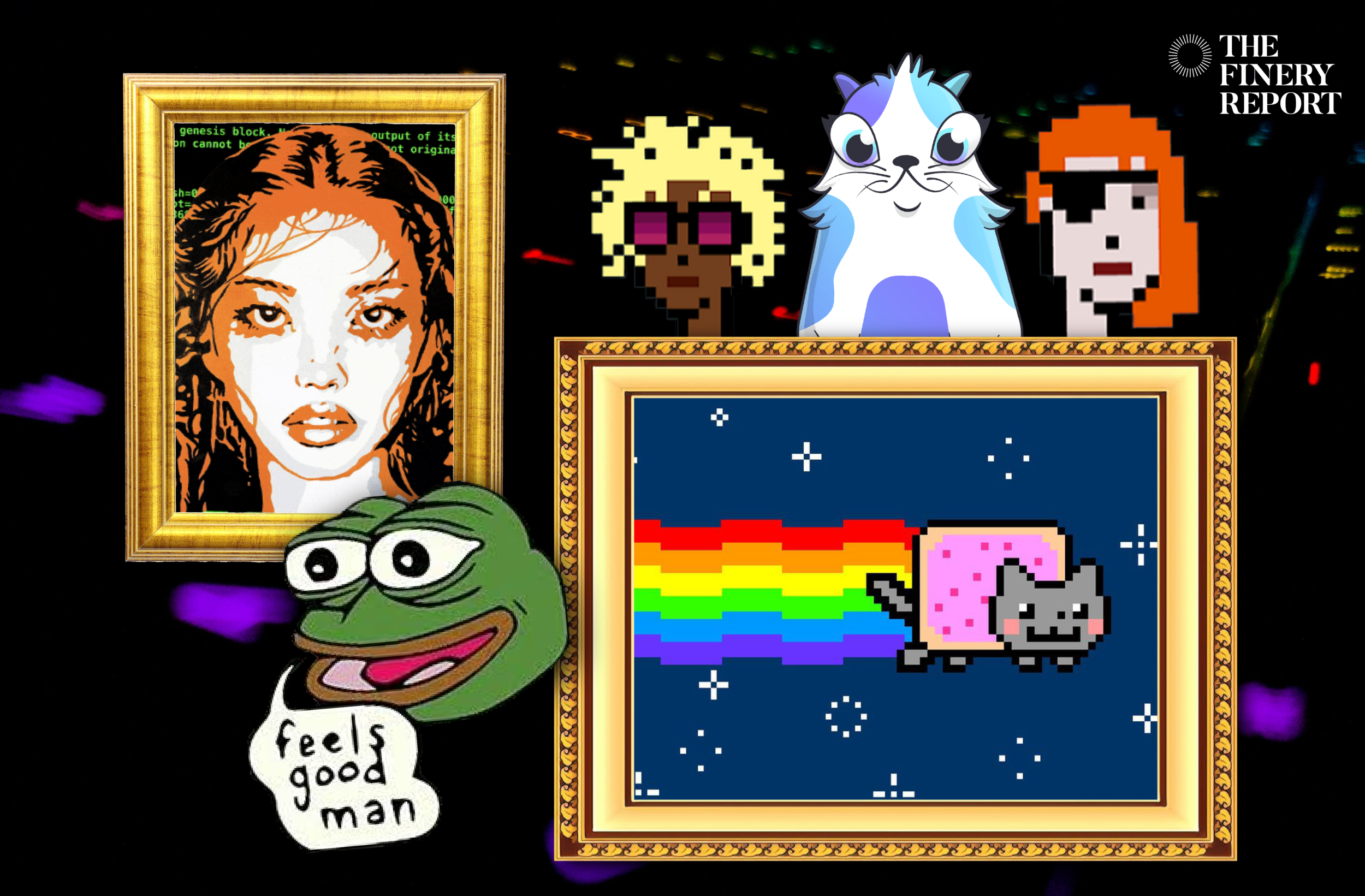A brief explanation of crypto art: NFT
Read in Indonesian
Read part 1 - A brief explanation of crypto art: Blockchain
If you are keeping up with the news, chances are you have encountered the latest hype in the art world, NFT. The craze has caught the attention of musicians, artists, world renowned auction house Christie’s and Michael Jordan. NFT opens the door to immense possibilities for artists to get more commissions and increase the value of their work. Jack Dorsey, founder of Twitter, even ‘minted’ his first tweet as NFT.
Short for non-fungible token, NFT is one-of-a-kind crypto asset that is not interchangeable for other items. Other cryptocurrencies, on the other hand, are fungible. Take bank notes, for instance. When we exchange Rp10,000 for two Rp5,000 notes, the value remains the same. So is cryptocurrency. But with NFT, every token is different and there is no definite measurement to determine the value of an NFT.
One of the reasons behind the craze stemmed from NFT’s ability to recognise the original owner of an artwork or asset. In the conventional artwork trade, artists receive one-time payment when their artwork is sold to buyers. When the buyer sells the artwork to another buyer, the original artist doesn’t get the cut. NFT allows the artists to receive a commission whenever their NFT artwork is traded because every transaction is recorded on blockchain.
NFT acts like a collectible asset. Sure, the Nyan Cat GIF has existed on the Internet for a decade and it has been duplicated multiple times. However, owning the NFT of the GIF means owning the original or real Nyan Cat GIF. For instance, regardless of the copies, there is only one Mona Lisa painting and it is not interchangeable. NFT could turn any artwork into non-interchangeable artwork.
Despite the madness, NFT at this stage is still considered a proof of concept. The concept can be traced back to 2012 when Yoni Assia published a paper about bitcoin 2.X or Coloured Bitcoin. The idea is to create a framework on top of the bitcoin blockchain that can identify the coloured coin. Coloured coin is equivalent to a rare coin.
While there are several issues with coloured coin, the experiment certainly opened the door for further exploration. In 2014, a hackathon event -a sprint-like tech event where programmers have to create a new tech overnight- brought together digital artist Kevin McCoy and technologist Anil Dash. The duo coined the idea of verifiably unique digital artworks that we currently know as NFT.
The concept as Dash wrote on The Atlantic was “first version of a blockchain-backed means of asserting ownership over an original digital work.” It was named monetised graphics. Ironically, when McCoy and Dash presented their idea to the audience, laughter echoed since the audience believed it would prompt companies to mess with creative industries.
Image: Pepe the Frog
Then entered Counterparty in the same year. Counterparty is built on top of the bitcoin blockchain. It is used for trading cryptocurrencies and assets like game cards and memes. The most popular meme traded on Counterparty is the rare Pepe the Frog meme.
Meme trading began to pick up pace in 2017 on the ethereum blockchain when the blockchain launched Peperium, a project that decentralises meme marketplaces and trading cards where anyone can create memes that will live eternally on ethereum and InterPlanetary File System (IPFS). Peperium is associated with a token called RARE.
Looking at the soaring popularity of meme trading, John Watkinson and Matt Hall created Cryptopunks on ethereum with a twist. There are only 10,000 characters and none of them is similar to one another. 10,000 unique characters were instantly snapped up and traded online. It also inspires the current standard for the NFT and crypto art movement.
The outlook of NFT grew exponentially when Vancouver-based company Axiom Zen launched CryptoKitties in 2017 on the ethereum blockchain. CryptoKitties is a blockchain-based digital trading game that allows players to adopt, breed and trade cats. Like NFT, every cat is unique and one-of-a-kind. According to Niel de la Rouviere, CryptoKitties has recorded $6.7 million worth of transactions in a matter of days. Cats and the Internet never went wrong.
Image: CryptoKitties
Following the success of CryptoKitties, Axiom Zen founders created another blockchain-based game and collectibles company called Dapper Labs, which recently received an investment from Michael Jordan and Kevin Durant. The popularity of virtual cats also fuels the public’s interest in the potential of NFT. NFT experienced massive growth in 2018 and 2019.
Most NFTs are created on the ethereum blockchain. The process of creating NFT artwork is not as complicated as creating a new cryptocurrency. Anyone can create NFT artwork through marketplaces, such as OpenSea, Nifty Gateway and SuperRare. The platforms will automatically generate NFT for uploaded artwork. In short, let the platforms do the work.
Depending on the platform, there is a ‘gas fee’ or extra charges for minting NFT on our artwork. The requirement to sign up on the platform is to have a crypto wallet.
The excitement surrounding NFT will not go anywhere anytime soon. In fact, NFT will most likely be adopted by other industries, especially when the authentication process is required.















